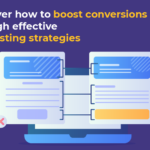Are you interested in running your own business without the hassle of inventory and shipping? Drop shipping offers a way to jump into e-commerce without massive startup costs. In this guide, we’ll walk you through everything you need to know to start a drop shipping business from scratch, whether you’re an aspiring entrepreneur or a side hustle seeker.
What is Drop Shipping?
Drop shipping is a retail fulfillment method where the seller does not keep any stock. Instead, when a customer purchases a product, the seller buys the item from a third-party supplier, who then ships it directly to the customer. This business model allows you to focus on marketing and customer experience without worrying about inventory management or shipping logistics.
Why Choose Drop Shipping?
Drop shipping has become increasingly popular for several reasons:
- Low Startup Costs: No need to invest in inventory upfront.
- Low Risk: Since you only order products after making a sale, there’s less financial risk.
- Location Flexibility: You can run your business from anywhere with internet access.
- Easy to Scale: As sales increase, you don’t need to worry about handling more inventory.
Step-by-Step Guide to Starting a Drop Shipping Business
Let’s dive into the practical steps to get your drop shipping business off the ground.
1. Choose Your Niche
Picking the right niche is crucial for your business’s success. Here are some tips for choosing a profitable niche:
- Identify Your Interests: A business in a niche you’re passionate about will be easier to sustain.
- Research Market Demand: Use tools like Google Trends and keyword research tools to gauge interest.
- Assess Competition: Look for niches with moderate competition and room for differentiation.
- Consider Profit Margins: Choose products with good profit potential, as you’ll need to cover advertising and shipping costs.
2. Research Products and Suppliers
Once you have a niche, the next step is to find reliable products and suppliers. Some popular drop shipping suppliers and platforms include:
- AliExpress: A popular choice for affordable products with global shipping options.
- Oberlo: A Shopify app that connects you to various suppliers.
- SaleHoo: A wholesale directory for high-quality suppliers.
- Spocket: Focuses on suppliers based in the U.S. and Europe for faster shipping.
3. Build Your Online Store
Building an online store has become more accessible than ever, thanks to e-commerce platforms. Here are some popular options:
- Shopify: A user-friendly platform with various apps and plugins, ideal for drop shipping.
- WooCommerce: A customizable option if you have a WordPress site.
- BigCommerce: Offers built-in features and is known for scalability.
Set up your website with product pages, descriptions, and clear call-to-action buttons to create a seamless shopping experience.
4. Create a Compelling Brand
Your brand is more than just a logo or a name—it’s the experience and perception customers have when interacting with your business. Here’s how to establish a brand identity:
- Design a Logo: Use tools like Canva or hire a designer on Fiverr to create a logo.
- Choose a Color Palette: Consistent colors help create a memorable brand image.
- Write Your Brand Story: Share why you chose this niche and what makes your business unique.
- Develop a Unique Selling Proposition (USP): Explain why customers should buy from you instead of your competitors.
5. Add High-Quality Product Descriptions and Photos
Effective product descriptions and quality images are essential for converting visitors into customers. Here’s how to make your product listings stand out:
- Highlight Key Benefits: Focus on the features that matter most to your customers.
- Use Engaging Language: Write in a conversational style and avoid jargon.
- Optimize for SEO: Use keywords in titles and descriptions to help your products rank.
- Use High-Quality Images: Clear, high-resolution images help customers feel confident in their purchase.
6. Set Up Payment Methods
Offering multiple payment options makes it easy for customers to complete their purchases. Shopify, WooCommerce, and BigCommerce integrate with major payment providers such as:
- PayPal: A trusted payment processor for online transactions.
- Credit/Debit Card: Accept credit cards using Stripe or Shopify Payments.
- Buy Now, Pay Later Options: Services like Afterpay and Klarna can attract customers who prefer installment payments.
7. Focus on Marketing and Customer Acquisition
To generate sales, you need to bring visitors to your store. Here are some popular marketing methods for drop shipping businesses:
- Social Media Marketing: Build your brand on platforms like Instagram, Facebook, and Pinterest.
- Influencer Marketing: Partner with influencers in your niche to promote products.
- Search Engine Optimization (SEO): Optimize your website to rank on search engines.
- Paid Advertising: Consider Google Ads or Facebook Ads to reach a targeted audience.
8. Offer Excellent Customer Service
Customer service plays a crucial role in retaining customers and building your brand’s reputation. Tips for providing excellent service include:
- Timely Responses: Respond to customer inquiries quickly.
- Order Updates: Keep customers informed about order processing and delivery status.
- Return Policy: Clearly state your return and refund policy to avoid confusion.
9. Monitor and Optimize Performance
Regularly tracking your business performance helps you understand what’s working and where improvements are needed. Key metrics to monitor include:
- Conversion Rate: The percentage of visitors who make a purchase.
- Customer Acquisition Cost (CAC): The cost of acquiring each new customer.
- Average Order Value (AOV): The average amount spent per order.
- Return on Ad Spend (ROAS): The revenue generated for each dollar spent on advertising.
10. Scale Your Business
As your drop shipping business grows, consider these strategies to scale:
- Expand Product Lines: Add new products that complement your current offerings.
- Explore New Markets: Target customers in different countries or demographics.
- Automate Tasks: Use tools for inventory management, email marketing, and customer service.
- Invest in Advanced Advertising: Consider retargeting ads to reach past visitors or abandoned cart recovery.
Pros and Cons of Drop Shipping
Pros
- Low Startup Costs: No need for a warehouse or initial inventory.
- Easy to Start: With the right tools, setting up a drop shipping store is straightforward.
- Scalability: As demand grows, you can scale without worrying about inventory management.
Cons
- Lower Profit Margins: Drop shipping margins can be thin due to supplier costs.
- Reliance on Suppliers: Your business is dependent on the quality and reliability of suppliers.
- Shipping Delays: International suppliers may cause longer delivery times, impacting customer satisfaction.
Common Mistakes to Avoid
Starting a drop shipping business can be challenging, especially for beginners. Here are some common mistakes and how to avoid them:
- Ignoring Supplier Vetting: Always verify supplier reliability before adding their products to your store.
- Choosing an Oversaturated Niche: Find a niche with enough demand but not too much competition.
- Neglecting Customer Service: Prompt and polite communication can go a long way in building trust.
Is Drop Shipping Right for You?
Drop shipping offers a fantastic opportunity, but it may not be for everyone. If you’re looking for a low-risk business with minimal upfront costs, drop shipping is worth considering. However, if you’re aiming for high margins or complete control over the supply chain, traditional e-commerce or wholesale may be better options.
Conclusion
Starting a drop shipping business from scratch is an accessible way to break into e-commerce. By choosing a niche, setting up a store, and implementing smart marketing strategies, you can create a successful drop shipping business. Remember to focus on customer experience, monitor performance, and continuously optimize your approach to stay competitive.
FAQs
- How much money do I need to start a drop shipping business?
You can start with as little as a few hundred dollars to cover website hosting, marketing, and basic tools. - Can I start drop shipping without a website?
While a website adds professionalism, you can start with marketplaces like eBay or Amazon. However, having your site gives you more control over branding. - Do I need a business license for drop shipping?
Some areas require a business license for online stores. Check local regulations to ensure compliance. - Is drop shipping profitable?
Yes, drop shipping can be profitable with the right products, effective marketing, and cost management. - How long does it take to make money with drop shipping?
Results vary, but with a solid strategy, you could see profits within a few months.







